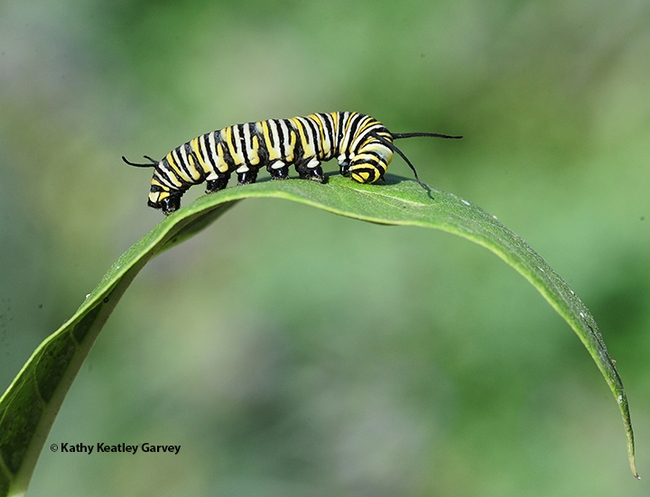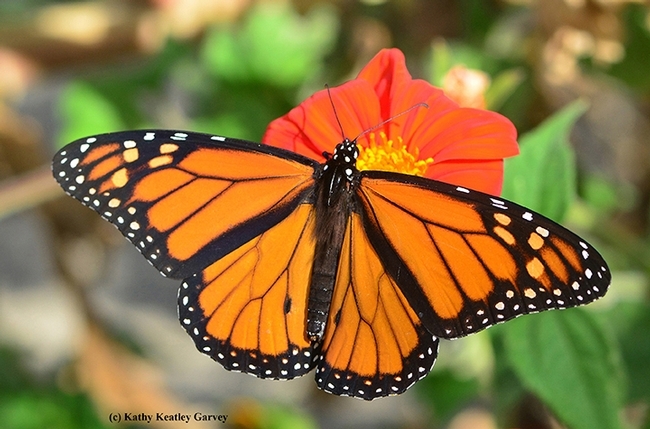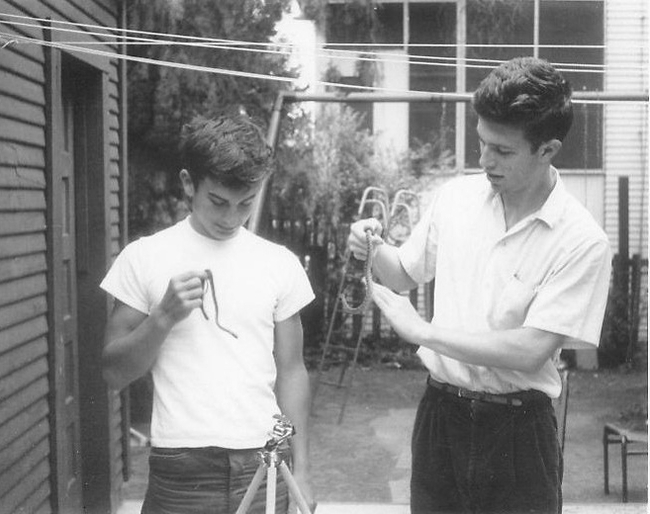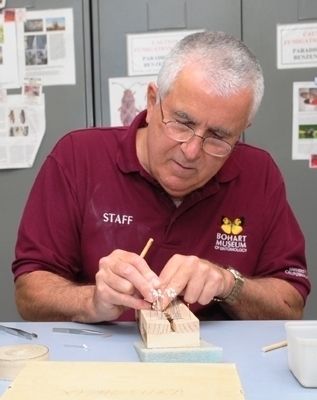- Author: Kathy Keatley Garvey
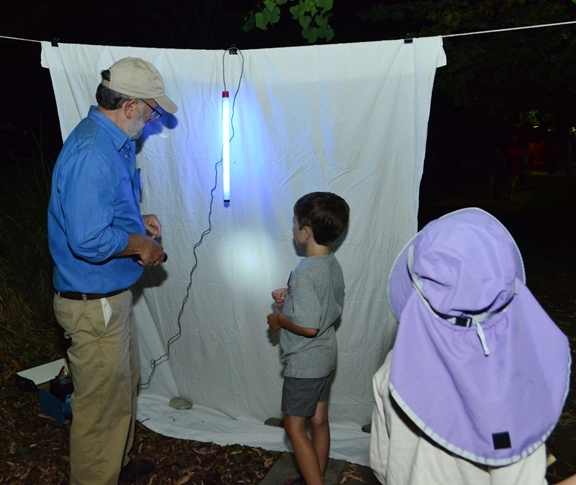
If you attend the Bohart Museum of Entomology's annual Moth Night celebration, affiliated with National Moth Week, you'll meet John De Benedictis, better known as “The Moth Man.”
The indoor-outdoor event, free and open to the public, is set from 7 to 11 p.m., Saturday, July 20 in Room 1124 of the Academic Surge Building, 455 Crocker Lane.
De Benedictis and his colleagues annually set up a blacklighting display, using UV lighting to attract moths and other night-flying insects. He has blacklighted for 37 years.
His moth collection of some 600 species from the Stebbins Cold Canyon Reserve and 300 species from his backyard in Davis is housed in the Bohart Museum.
"Jerry Powell (the late UC Berkeley professor and director of the Essig Museum of Entomology) once estimated that there are about 17,000 North American butterflies and moths," De Benedictus commented. "I would not be surprised if it's closer to 20,000."
'Expertise in Moth Identification Is Invaluable'
"John has been great volunteer and supporter of the Bohart Museum," said UC Davis distinguished emerita professor Lynn Kimsey, former director of the Bohart Museum. "His expertise in moth identification is invaluable and now that Jerry Powell is gone, there's really no one else who can identify moths, particularly little brown moths (LBMs) of California."
De Benedictis, a research associate at the Bohart Museum, is closely linked to UC Berkeley, his alma mater, and UC Davis, where he retired. He holds a bachelor's degree in biology, with an emphasis in entomology (1979), and a master's degree in entomology (1998) from UC Berkeley. "Jerry was my major professor and also recruited me as an undergraduate to work in his lab."
A UC Davis retiree since 2001, De Benedictis worked as a staff research assistant from 1995 to 2001 in the laboratory of medical entomologist Tom Scott, UC Davis Department of Entomology and Nematology.
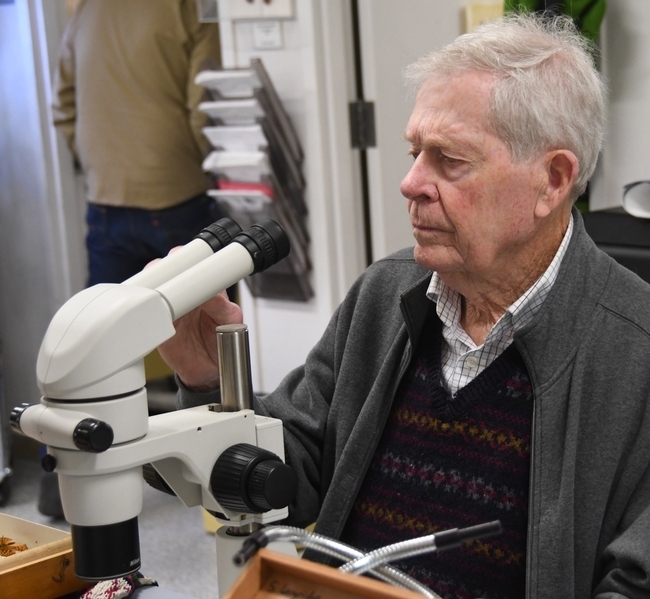
"I came to Davis in 1989 for a two-month job to key out aphids for Beth Grafton-Cardwell, who at that time was a postdoc of (Professor) Jeffrey Granett. During that time, the rootstock that was being used to protect wine grapevines from grape phylloxera began to fail in Napa and Sonoma counties, so I was able to prolong my stay at Davis through a series of grants to address that problem. While working for Beth and Jeffrey, I got a mini-grant from the former Institute of Ecology to study moths at the Stebbins Cold Canyon Reserve where I collected from 1989 until the last major fire in 2020."
“I began a similar inventory of the species in my backyard after I purchased my home in 1998," De Benedictis said. "It continues to this day, and a synoptic collection of the 300 or so species that I've collected in my yard is housed alongside the Cold Canyon collection in the Bohart Museum.” Grace Horne of the lab of urban landscape entomologist Emily Meineke, Department of Entomology and Nematology, is analyzing the data from these studies as part of her doctoral research.
When Children Were 'Free-Range'
John traces his interest in entomology to his childhood. Born in Oakland in 1945, the second of six children on Aldo and Eleanor De Benedictis, he grew up in Berkeley.
“I am grateful that I had parents who not merely tolerated but encouraged our activities and to have grown up in an era when chickens were confined and children were free-range rather than the reverse as is the case today.”
“I attended Berkeley public schools and later UC Berkeley, except for my last year of junior high school which was in Mt. Vernon, N. Y., while my dad was temporarily transferred,” De Benedictis said. “My older brother Paul was keenly interested in natural history, which switched from subject to subject whenever a new Golden Nature Guide came out. We spent much of our free time poking around in the East Bay Regional Parks and in Strawberry Canyon behind Berkeley's Central Campus.” (Paul went on to obtain a doctorate in ecology in Michigan.)
While in the fourth grade, John began “collecting butterflies, a few flashy moths, and other insects with my older brother and a couple of classmates. A highlight of my youth was the return trip from New York by car where we chased butterflies that we never saw in New York or in California as often as we could complain long and loud enough to make my dad stop the station wagon.”
When John was attending junior high in the late 1950s, he found a Polyphemus moth under a streetlight on the UC Berkeley campus. “It was a highly prized find. At UC Berkeley, we collected on spring field trips with the systematics professors and students and we---whoever was participating--ran lights on during our spruce budworm field trips. I ran a sheet a few times on San Bruno Mountain on my own and was surprised to find that very few of the moths that I had reared from caterpillars flew to my light. While in grad school and afterwards, I went on a few of Jerry Powell's trips to the California Channel Islands to assist him in his inventory of the islands' Lepidoptera species. There we ran lights and set out light traps when it wasn't too cold and windy.”
Species Named for Him
De Benedictis recalled that he and Dave Wagner, now a professor at the University of Connecticut, started graduate studies with Powell at UC Berkeley at the same time. "Jerry had a long-term project studying larval host plants of caterpillars, and Dave and I were among the succession of students who took care of his larval rearing lots on the Berkeley campus. Dave went on to become the current authority on the caterpillars of large moths. I was more interested in smaller moths and prolonged my graduate years by collecting caterpillars on San Bruno Mountain by the San Francisco Airport.” There De Benedictis discovered a handful of new species, one of which Powell named Gnorimoschema debenedictisi.
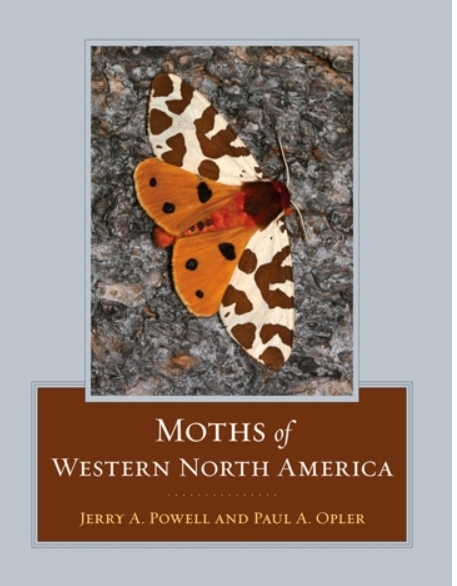
“The Mid-Winter Gathering is a legacy of Jerry Powell,” said De Benedictus, who spent more time in the field with Powell than any other UC Berkeley graduate student. "I was privileged to be Jerry's student and lucky to have him become my friend."I
In a tribute to Powell, the Essig Museum wrote: "Jerry's rearing program was the most extensive in the history of the study of New World Microlepidoptera. For over 50 years he and his students processed more than 15,000 collections of larval or live adult Lepidoptera. Resulting data encompass more than 1,000 species of moths, through rearing either field-collected larvae or those emerging from eggs deposited by females in confinement. This total includes more than 60% of an estimated 1,500 species of Microlepidoptera occurring in California."
Powell and Paul Opler, two Lepidoptera legends, co-authored Moths of Western North America.
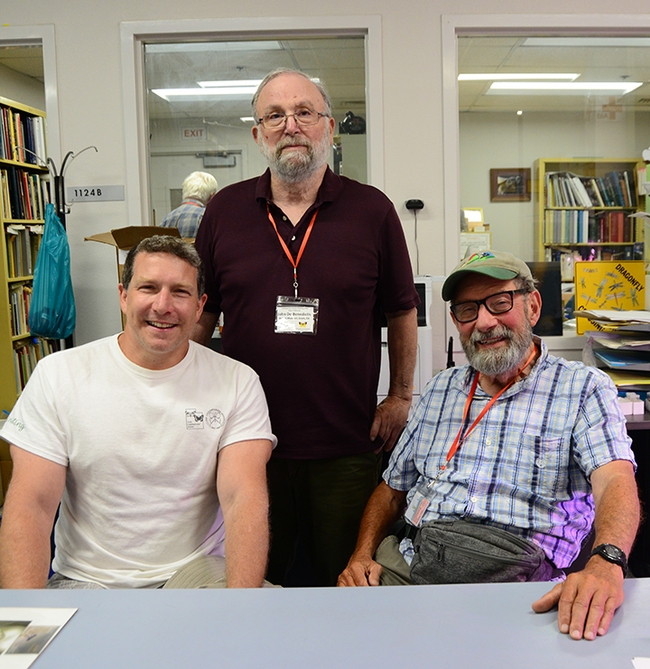
- Author: Kathy Keatley Garvey
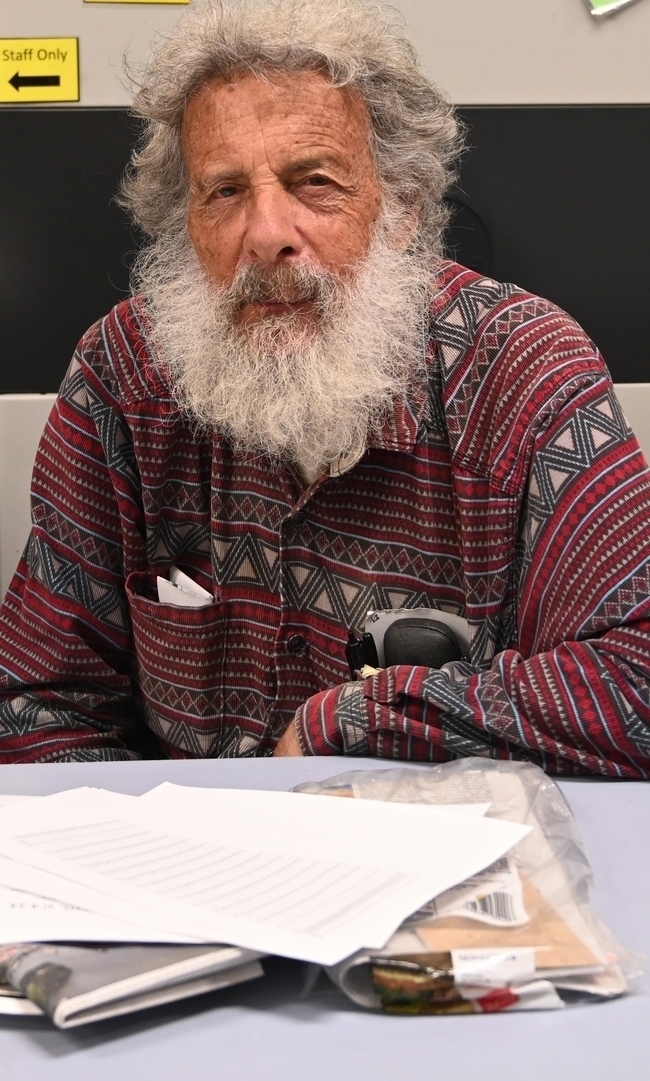
There's a good reason why.
Shapiro has monitored the butterfly populations of central California since 1972 and maintains a research site at https://butterfly.ucdavis.edu. "I began doing the 4th of July butterfly count in 1978 and have done it every year since--always on the actual Fourth," he emailed his "posse" today.
"As I read the models, the first week of July this year will be at or near record heat every day," Shapiro wrote. "The maximum should be 108 or 109 on Wednesday, and Thursday the 4th about 106 here (Davis, Calif.)"
"As most of you know, under such heat butterflies go into heat-avoidance mode," he pointed out. "Any data generated after the T (temperature) reaches 100F are suspect. Does anyone record butterfly diversity when things are known to not be flying?"
Shapiro quipped that he knows his limits "and I am not going to push them, even with a supply of intravenous Gatorade. If I do the Willow Slough count it will be after the T retreats to a civilized level, which may not be until about the 9th or 10th."
"At any rate, don't expect a report on Thursday."
Note: You may know Shapiro not only for his incredible butterfly population data, but also for the "Beer for a Butterfly" contest he hosts every year in the three-county area of Sacramento, Yolo and Solano. The first person to net the first-of-the-year cabbage white butterfly, Pieris rapae, and win the contest receives a pitcher of beer or its equivalent. It's all part of his scientific research. P. rapae is emerging earlier and earlier as the regional climate has warmed, Shapiro says. (See Bug Squad post)
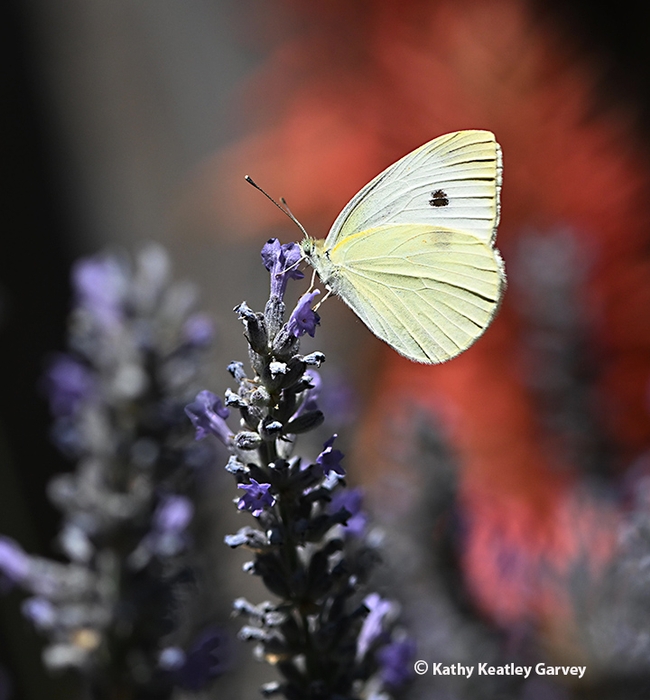
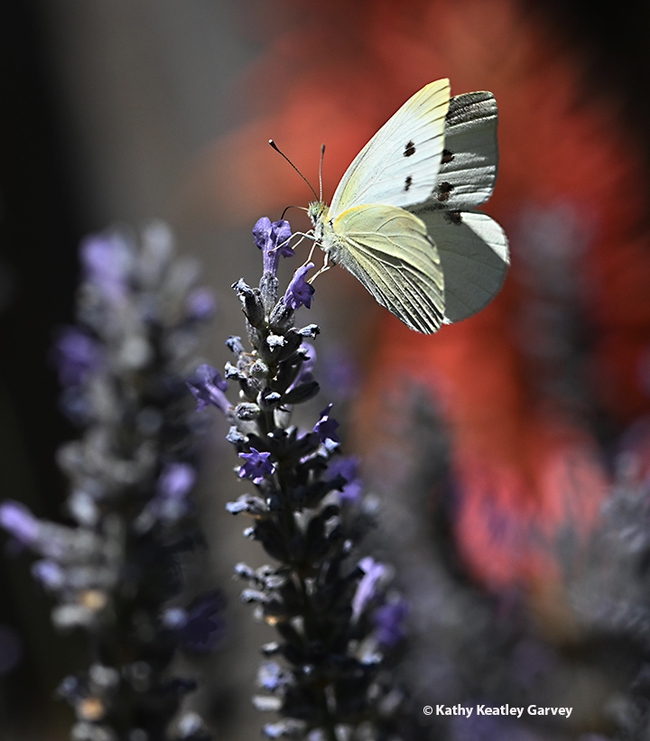
- Author: Kathy Keatley Garvey
Look closely at a patch of California golden poppies and you may see a sweat bee (genus Halictus) collecting gold pollen. The pollen basket is on the hind legs but you'll see "gold" also dusting the head and abdomen.
Native bee, commonly known as "halictid bee." Native plant. In fact, the California golden poppy, Eschscholzia californica, is the state flower.
And the rumor that it's "protected" and you'll get arrested if you pick a poppy along a roadside is inaccurate.
The California Department of Fish and Wildlife sets the record straight on its website: "It is often believed that there are laws prohibiting the cutting or damaging of the California poppy because it is the state flower. While there is no law protecting the California poppy specifically, California Penal Code Section 384a(opens in new tab) requires written landowner permission to remove and sell plant material from land that a person does not own, and removing or damaging plants from property that a person does not own without permission may constitute trespass and/or petty theft. However, these laws do not prevent the collection of California poppies on private land by the landowner. California poppies are a beautiful and easy-to-grow addition to your garden, and although you may choose to pick them from your property, they last much longer in the ground!"
Want to learn more about native bees? California has some 1600 species of wild or non-managed bees. Be sure to read California Bees & Blooms: A Guide for Gardeners and Naturalists. It's the work of University of California authors, all with UC Berkeley connections: Gordon Frankie, now professor emeritus, UC Berkeley; Robbin Thorp (1933-2019), UC Davis distinguished emeritus professor who received his doctorate in entomology from UC Berkeley; photographer Rollin Coville, who holds a doctorate in entomology from UC Berkeley, and Barbara Ertter, curator at the UC Berkeley-based University Herbarium and Jepson Herbarium.
The Bohart Museum of Entomology is hosting an open house on bees, both wild and managed, from 1 to 4 p.m., Sunday, May 19 in Room 1124, Academic Surge Building, 455 Crocker Lane. It's free and family free.
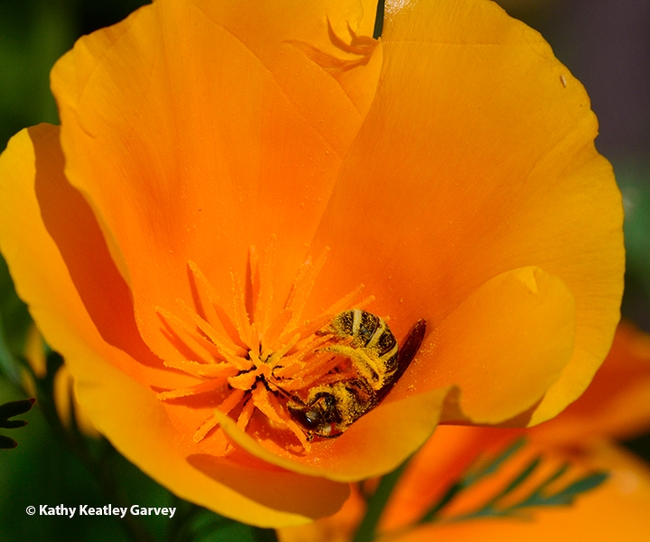
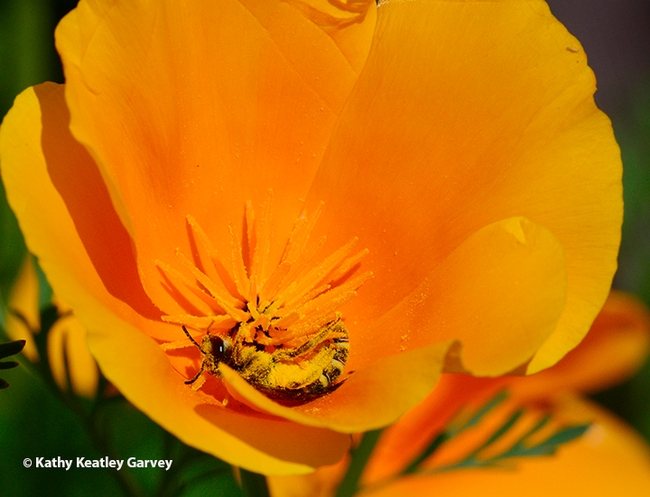
- Author: Kathy Keatley Garvey

They'll be safe and dry in the bee observation hives.
The free and family friendly event, co-sponsored by the University of California, Davis, takes place from 10 a.m. to 7 p.m., Saturday, May 4, at the Yolo County Fairgrounds, 1250 East Gum Ave. Parking is free, a spokesperson said.
The festival traditionally takes place in downtown Woodland and draws a crowd of some 40,000.
The California Honey Festival emphasizes the importance of bees and promotes honey and bee products. It features educational presentations, kids' center activities, honey tasting, cooking demonstrations, a beer and mead garden, live music, vendors and more. Beekeeping organizations will answer questions about bees and showcase bee observation hives.
Speakers at presentations in Waite Hall will include GATEways horticulturist Rachel Davis of the UC Davis Arboretum and Public Garden, who will speak from 3:30 to 4 p.m.
“I'll be talking about pollinator gardening, focusing on native bees, butterflies, moths, hoverflies, and hummingbirds,” Davis said. “The My Habit Horticulture Learning by Leading™ and UC Master Gardener team will be tabling about Climate-Ready Gardening, with an emphasis on biodiversity and gardening for pollinators. We want to equip gardeners with tools to create beautiful, habitat-supporting landscapes that are primed to thrive in the face of our changing climate.”
The line-up of speakers at Waite Hall:
11 to 11:30, 2024 American Honey Queen Kaelyn Sumner
11:45 to 12:15: Cache Creek Conservancy, Jolene Jindrich
12:30 to 1 p.m. SugarBee Apples, sponsor of the California Honey Festival
1:1 to 1:45: Hives for Heroes, Charles McMaster
2 to 2:30: California Beekeeping Federation “The Truth About Honey Bees, Almonds and a Partnership That's Sweeter Than Honey" with Trevor Tauzer (Tauzer Apiaries) and Kelli Evans (Blue Diamond Growers)
2:45 to 3:15: SugarBee Apples
3:30 to 4 p.m.: UC Davis Arboretum and Public Garden, Rachel Davis
4:15 to 4:45: Honeybee Discovery Center, Nicole Johansson
5 to 5:30: 2024 American Honey Queen Kaelyn Sumner

The UC Davis-based California Master Beekeeper Program, which uses science-based information to educate stewards and ambassadors for honey bees and beekeeping, will not be participating this year. But science-based information on bees will be provided by the California State Beekeepers Association and the Sacramento Area Beekeepers' Association.
Capsule information on some of the organizations or speakers:
American Honey Queen, Kaelyn Sumner
American Honey Queen Kaelyn Sumner of Cecil, Wisc., is a senior at Kansas State University majoring in agricultural education and minoring in food science and entomology. She traces her interest in beekeeping to the FFA, where she was nationally recognized for her specialty animal production project and her agriscience fair research. The American Honey Bee Program, part of the American Beekeeping Federation, which educates and advocates for beekeepers and United States honey consumption.
Cache Creek Conservancy, Jolene Jindrich
The Cache Creek Conservancy is a non-profit organization founded in 1996. Its mission is to restore, preserve and protect the Cache Creek watershed. The focus of the Conservancy's work has been riparian restoration along a 14-mile stretch of the Lower Cache Creek as mentioned in the Yolo County's Cache Creek Resources Management Plan.
Jolene Jindrich helps care for the Tending and Gathering Center (TGG). She holds a bachlor's degree in microbiology from Humboldt State University, where she studied genetics, plant physiology and cell biology and spent time volunteering in biology and chemistry labs. She works with the Habitat Restoration Manager and the TGG Steering Committee to tend desirable native species, manage non-natives, maintain the trails and generally improve both the visual aesthetics and habitat value.
Hives for Heroes, Charles McMaster
Hives for Heroes® is a national non-profit service organization focusing on sustainability, conservation, and providing a healthy transition from service. Through our national network of beekeepers, we provide connection, purpose, and healthy relationships, through access, resources, and funding for Active Duty, Veterans, and First Responders.
McMaster, of Copperas Cove, Texas, is the connections director of Hives for Heroes, a U.S. Army veteran, and a six-year beekeeper. He devotes much of his time as a member of the board of directors of the Texas Beekeepers Association.
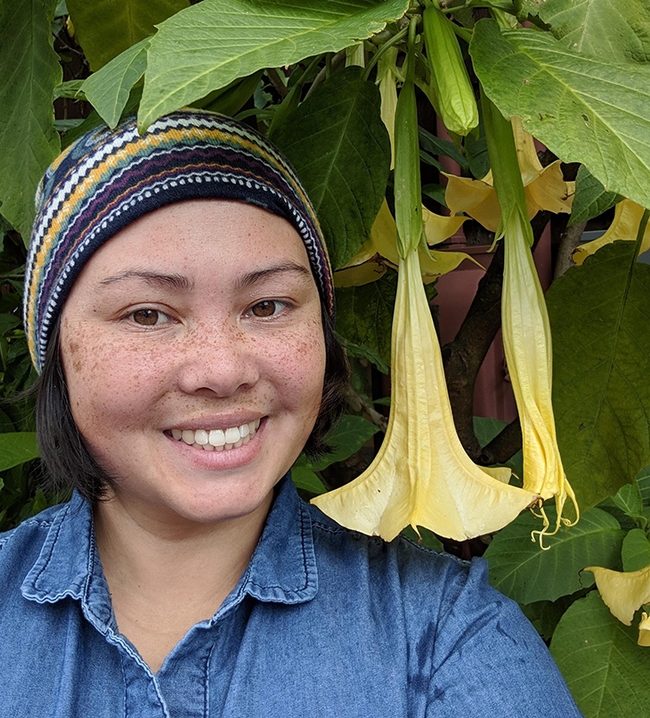
“The UC Davis Arboretum and Public Garden spans the campus's 5300-plus acres and includes the historic Arboretum – a 100-plus acre campus and regional amenity comprised of demonstration gardens and scientific collections as well as the Putah Creek Riparian Reserve – a rare stream and grassland ecosystem managed for teaching, research, wildlife and habitat protection.”--Website
Honeybee Discovery Center, Nicole Johansson
The Honeybee Discovery Center, currently located at 501 Walker St., Orland., Glenn County, Calif., is designed to teach the public about honey bees and the rich history of beekeeping in Northern California, according to its website. "The Center is a place for the public and schools to learn about honeybees and for the beekeeping community to display items that are part of beekeeping and its history."
Northern California is known for its queen bee rearing, with tens of thousands of queen bees produced annually. Orland is considered the “Queen Bee Capital of North America.” Eighty percent of the queen bees raised in the United States are from Butte, Glenn, Shasta, and Tehama counties, "The Golden Triangle.” Orland is also the 40th “Bee City, USA” with a commitment to creating greater awareness and an environment that protects honey bees and other pollinators. Yvonne Koehnen of the C. F. Koehnen & Sons Inc., originated the idea of the Honeybee Discovery Center. The Center, which includes a museum, is open the first consecutive Friday and Saturday of every month from 3 to 6 p.m.
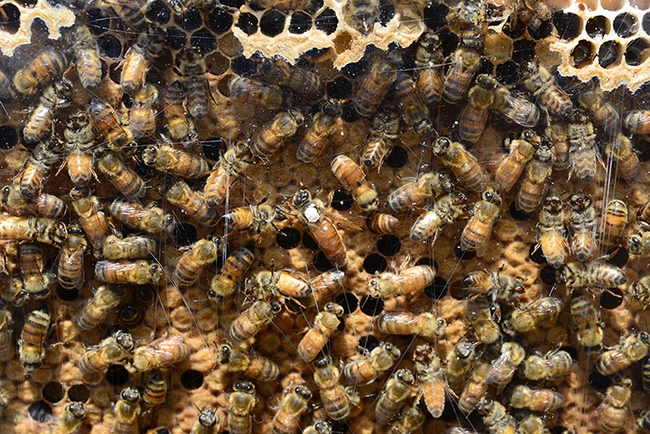
- Author: Kathy Keatley Garvey
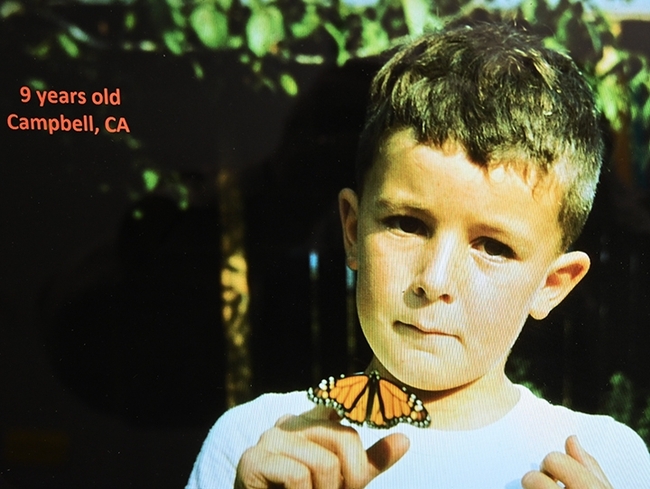
Scientists estimate that only 10 percent of the eggs and 'cats survive to adulthood.
They don't "survive" at all in California classrooms.
California classrooms used to showcase the metamorphosis of the monarch--from egg to caterpillar to chrysalis to adult-- but no more. If you live in California, you're not allowed to collect or rear monarchs without a scientific permit. And scientific permits are difficult to obtain.
According to the California Department of Fish and Wildlife: "A Scientific Collecting Permit (SCP) is required to handle wild monarchs in California including for educational purposes. It is unlawful to collect, remove from the wild and/or captively rear monarchs in California without an SCP, per California Code of Regulations (CCR), Title 14, section 650.
Admire them in the wild, but legally, you can't collect or rear them.
As a child growing up in the San Jose area, entomologist Jeff Smith, curator of the Lepidoptera collection at the Bohart Museum of Entomology, UC Davis, "raised and released many, many dozens of monarchs, as most empty lots were filled with vast stands of narrow-leaf milkweed, and we could easily gather caterpillars and keep them fed and healthy until they matured. This was an extraordinary thing to be able to watch--the final instar of the larva molting to change to the beautiful chrysalis and then seeing the butterfly develop within the chrysalis and hatch. We would hold it on our finger as the wings expanded and, finally, the butterfly flew away."
The Bohart Museum has some seven drawers of monarch specimens. "With around 60 specimens per drawer that could amount to nearly 400 plus specimens (some drawers are not full," he said. The collection also includes nearly-white monarch specimens from Hawaii.
In their book, The Lives of Butterflies: A Natural History of Our Planet's Butterfly Life (Princeton University Press, 2024), authors David James and David Lohman point out that "...our children are the future and it is they who will determine the future of butterflies. If a child finds a caterpillar, let them keep it, feed it, and watch it metamorphose.They will remember the experience for the rest of their life, and it will instill in them a love and appreciation for lives smaller than their own."
James is an entomologist and associate professor at Washington State University who researches migratory monarchs, and Lohman is a biologist, professor and department chair, City College of New York.
“It is important that we do not try to excessively regulate to conserve butterfly populations," they wrote. "We need people to be part of the process and be the power on the ground behind conservation programs.”
They quote Lincoln Brower (1931-2018), a renowned Lepidopterist educated at Princeton and Yale universities: “Butterflies are treasures, like great works of art. Should we not value them as much as the beauty of Picasso's art or the music of Mozart or the Beatles?"
Robert Michael Pyle, founder of the Xerces Society for Invertebrate Conservation, and colleague David L. Wagner, advocated "Keep Nets in the Hands of Kids--and Others" in a piece in the fall edition of the Lepidopterists' Society newsletter. They asked:
"Is the coup de grace for children's face-to-face fascination with small-scale life to be delivered now by well-intentioned but ill-considered regulation?"
Smith declared that the regulation will not "help" with the conservation of monarchs, and that he hopes it will be reversed or modified.
